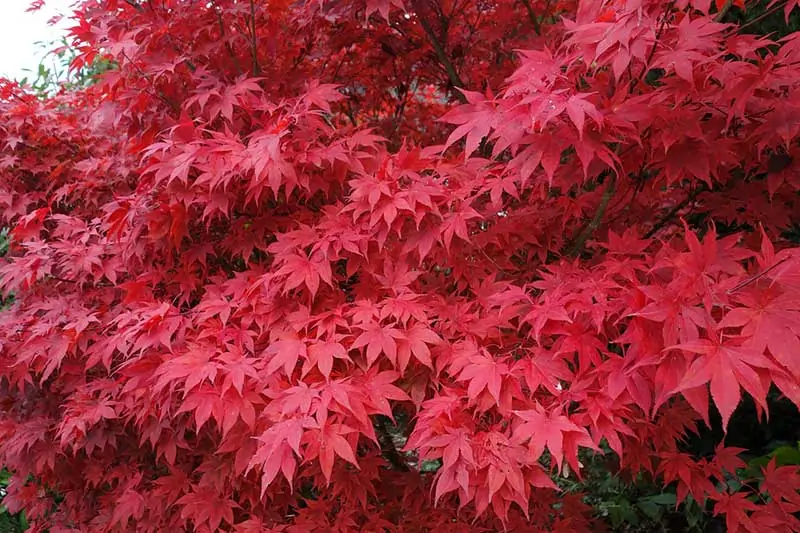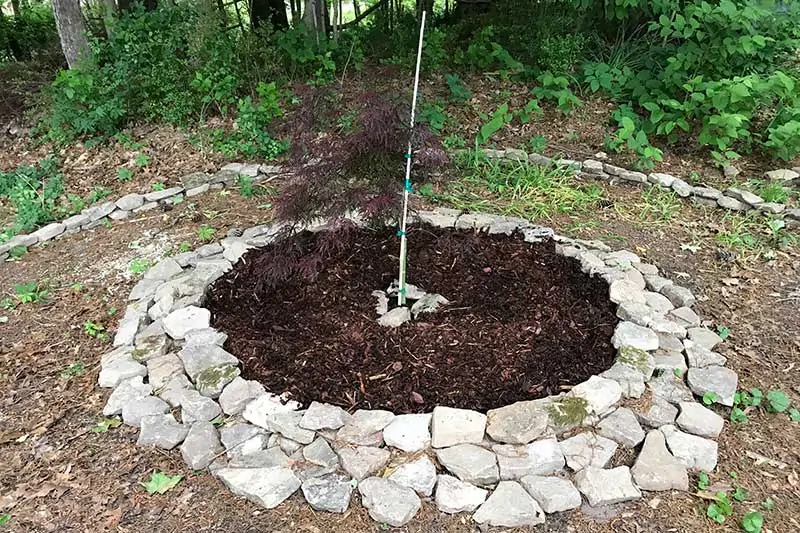Japanese maples are one of the smallest maple trees, making them perfect shade trees for patios or outdoor areas in your yard. These deciduous trees also have colorful foliage ranging from crimson red or purple to bronze or yellow, depending on the specific species.
When deciding to add these trees to your property, you’ll want to know how close can you plant a Japanese maple to your house. Read on for information on planting your tree, how close it should be to buildings, and what locations help them thrive.
How close can you plant a Japanese maple to your house?
Although they are smaller maple species, you still want to plant your Japanese maple at least 10 feet from your house. These trees can grow 20 to 30 feet tall, depending on the species but have shallow roots.
However, with regular trimming and pruning, you can make sure your tree stays small enough to be close to your home. You can also get dwarf Japanese maples that grow only 2 feet tall.
You’ll want to take into consideration the mature height of your Japanese maple when deciding where to plant them. Taller trees will need to be as far from your house as they will grow tall. However, be mindful of where the tree is located and look at what is overhead. You want to avoid:
- Snowdrops from the roof onto the branches
- Placing your tree above locations where you will be grilling outdoors
- Wires running overhead
- Areas where your tree will obscure views from windows
Will Japanese maple roots damage home foundations?
Since Japanese maples have shallow roots that are non-invasive, they rarely cause damages to the foundations of buildings. It’s actually one of the best trees to plant close to your home for shade over your patio.
Maple tree roots generally grow out and stay relatively close to the surface, so as your tree grows, you want to be careful that the roots aren’t getting too close to your foundation.
If you do have a Japanese maple near your building, some signs you want to watch out for in case there are foundation problems include:
- Floor surfaces becoming warped
- Foundation walls with small vertical cracks
- Doorframes becoming uneven
- Unexplained shattered windows
Can Japanese maple survive in full sun?
Most Japanese maple species thrive in partial-sun locations where they get shade in the afternoon. Too much sun can scorch or burn the leaves, causing them to brown, curl up, and drop.
However, some species can take full sun and still thrive. For example, the velvet Viking Japanese maple is one of the hardiest species that can survive full sun in cool summer regions. Another species that is considered more heat-tolerant is the fireglow Japanese maple that is bright red and grows up to 12 feet tall.
Do note that most young trees might not survive full sun exposure. So if you want to plant a Japanese maple in a full sun location, make sure it’s already at least 6 to 7 years old.
Where should I plant a Japanese maple?
Besides most Japanese maples preferring partial sun and shade during the afternoon, there are also other things to consider. For example, it’s best to plant them somewhere with protection from strong winds to prevent broken branches. They also do best in well-drained and well-aerated soil that remains moist. Generally, these trees don’t survive well in drought or extreme heat conditions.
Planting your Japanese maple closer to your home can also help stabilize temperatures for the tree, especially during winter. However, these trees don’t tolerate seaside or driveway salt well, so make sure they aren’t located where drainage from your walkways or driveway will reach their roots.

You can use raised beds to provide the proper drainage your Japanese maple needs and prevent salt damage. But if you are in a state where it gets colder in the winter, make sure the raised bed is large enough to hold the entire root system so you can insulate the roots from freezing.
You’ll also want to protect trees from late spring frosts that can shock their systems from the sudden temperature shift. Keep the trees covered when you hear a forecast for frost.
When should Japanese maples be planted?
The fall months are the best times to plant your Japanese maple. You should aim to plant your tree at least one month before the ground freezes.
This way, there is time for the roots to grow out and settle before winter. After you plant your tree, apply at least 3 inches of mulch around the base and keep it well watered.
If you make sure you water your Japanese maple tree properly, you can plant them in containers anytime during the year. However, spring can be the most vulnerable season for your tree, especially if you live in an area that has late frost periods.
Conclusion
Generally, your Japanese maple should be 10 feet from your house. However, you’ll want it further away if your tree’s mature height is above 10 feet, especially to prevent foundation damage. Also, make sure the planting location offers an optimal environment for your tree to thrive, including well-drained soils.
